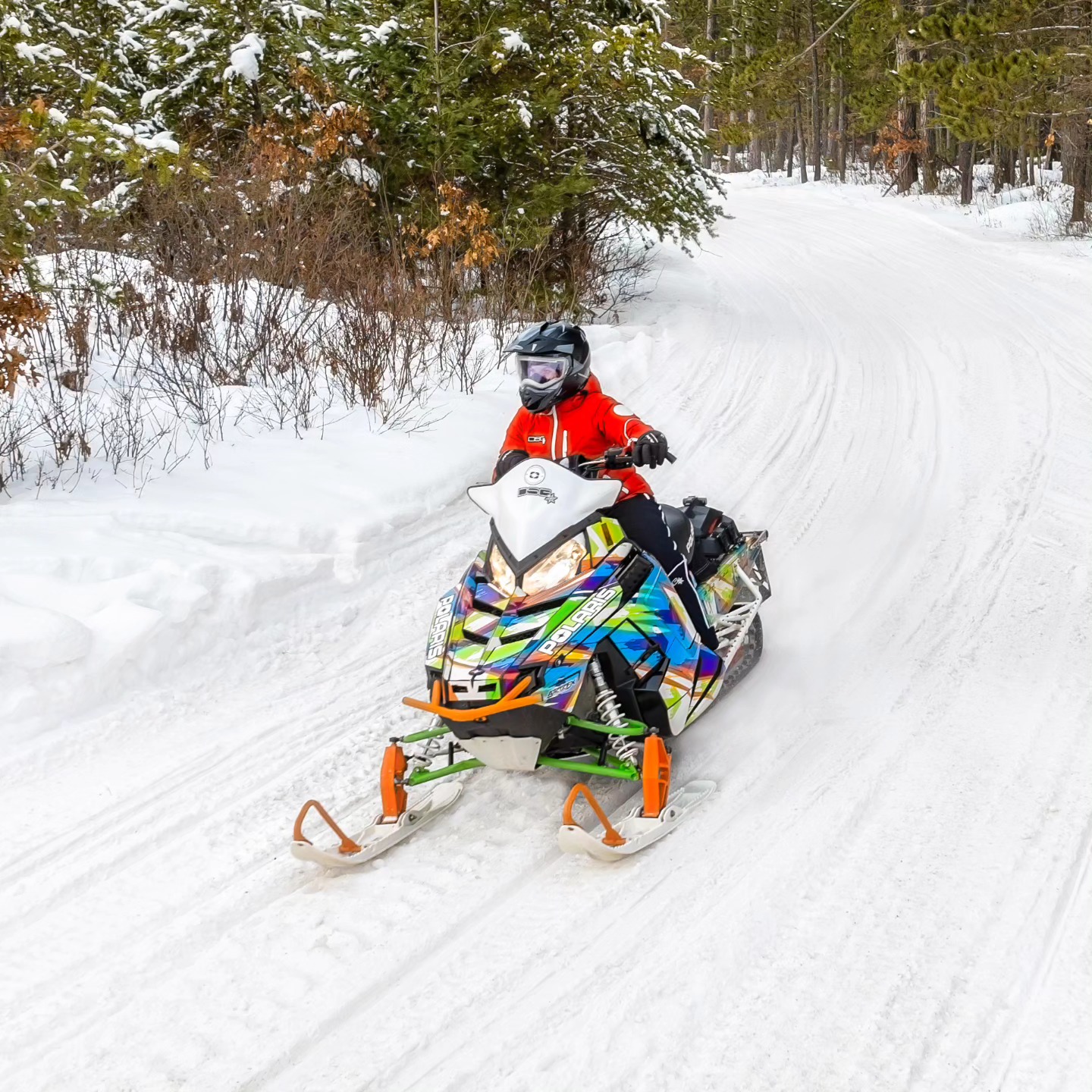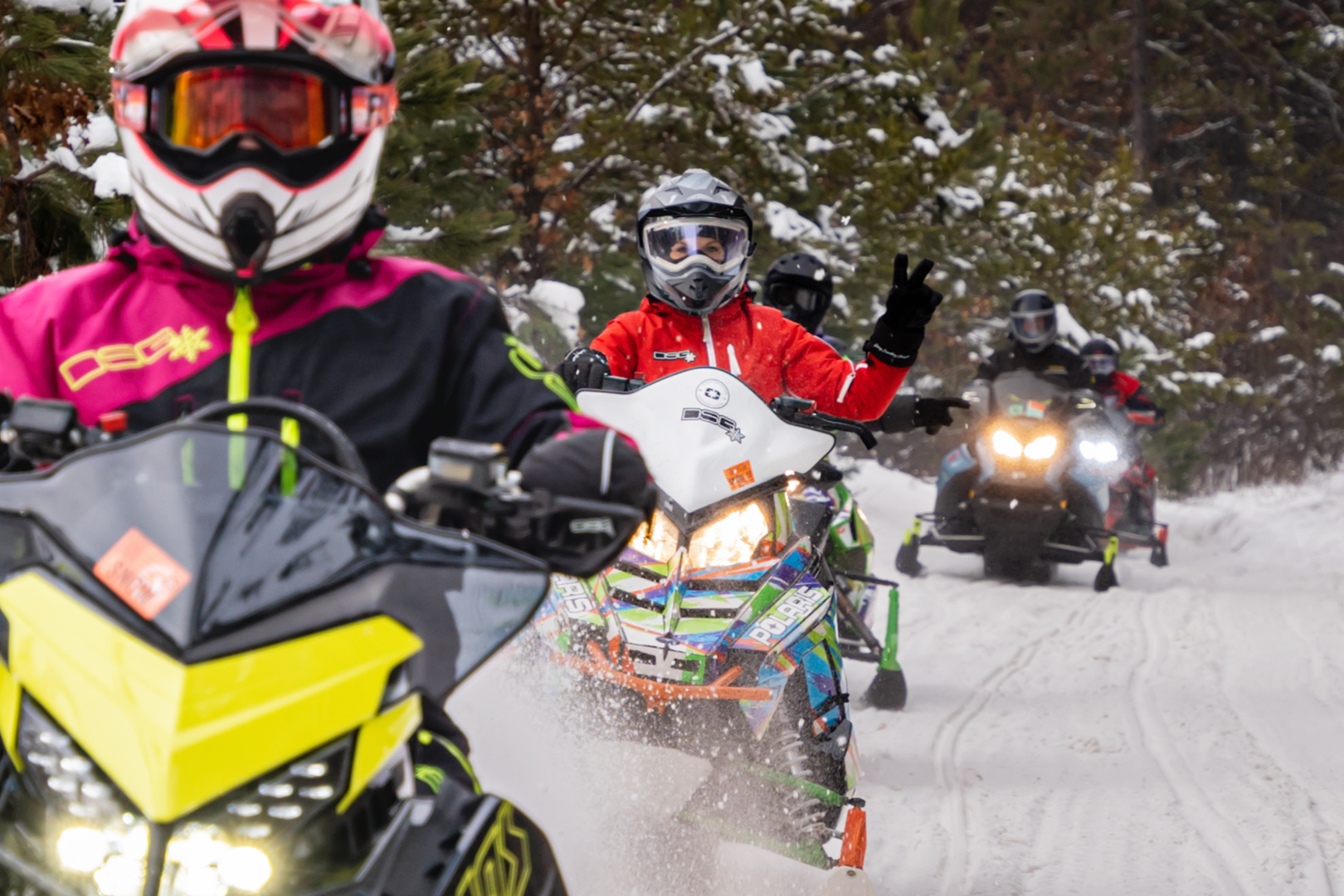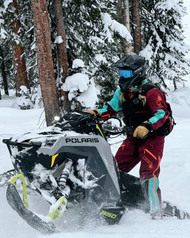Snowmobiling Safety Tips
Posted by Samantha Simma on Jan 7th 2024
Winter is the perfect time to enjoy the beauty of snow-covered landscapes, and snowmobiling is a thrilling way to embrace the season. Before embarking on this exhilarating adventure, it is important to prioritize safety. By following some essential snowmobiling safety tips, you can have an enjoyable and accident-free experience. Below, learn some crucial safety measures for snowmobiling…
1. Know the Local Laws
Before hitting the snow, make sure you are familiar with local regulations and
laws regarding snowmobiling. These rules differ by location, so familiarize
yourself with the guidelines in your area. This includes purchasing the
necessary permits or licenses before venturing out!
2. Dress for Cold Weather Conditions
Dressing for the elements is key to staying comfortable and safe while
snowmobiling. Wear thermal layers, including a base layer, insulating
mid-layer, and a waterproof and windproof outer layer. Achieve full protection
from winter weather conditions with a snowmobile helmet, gloves or mittens, a
balaclava, and well-insulated boots. Look for outerwear that has reflective
colors or piping for increased visibility, like the DSG Monosuit 2.0.
Invest in high quality gear to ensure that you can snowmobile with
confidence—knowing that your gear is durable and made to withstand the demands
of winter sports.

3. Buddy Up
Snowmobiling with a friend or in a group is always safer than riding alone. If
possible, ride with someone who knows the area so that you can be made aware of
potential hazards in advance. Also, discuss a plan for the ride in advance, and
what you’ll do if anyone becomes separated from the group. Just in case things
don’t go according to plan, make a plan for potential scenarios. Establish
communication signals and stay within sight of each other, especially in
challenging terrain.
4. Don’t Drink and Ride
Just like with any motorized vehicle, never operate a snowmobile under the
influence of alcohol or drugs. These substances can impair your judgment,
coordination, and reaction time, greatly increasing the risk of accidents.
5. Check the Weather
Keep a close eye on weather forecasts before heading out on your snowmobiling
adventures. Extreme weather conditions, such as heavy snowfall, high winds, or
low visibility, can significantly impact your safety. Not only should you be
aware, but also prepared for impending weather conditions. If extreme
conditions are predicted, consider sticking to the trails for increased safety.
6. Stay on Designated Trails
Stick to marked and designated snowmobile trails to minimize the risk of
accidents. Trails that are often maintained and designed for snowmobile use ensure a smoother and safer ride. Venturing off-trail could lead to hidden
hazards or unprotected areas, endangering both you and the environment. Respect private property and adhere to local regulations to preserve the environment and ensure a safe experience for everyone.

7. Know the Potential Hazards of the Terrain
Depending on where you snowmobile, you may be crossing frozen bodies of water or be in avalanche terrain. It’s important to be aware of the hazards of both. For example, if you will be crossing ice, make sure you check the ice thickness and know that ice conditions can vary greatly. If you are unsure of the thickness or safety of the ice, find an alternate route. Meanwhile, in mountainous regions with avalanche risks, you should be prepared with the necessary safety equipment: beacons, probes, and shovels. Always check local avalanche forecasts and avoid high-risk areas.
8. Manage Your Speed:
Speed can be exhilarating, but remember to manage it wisely for your safety and
the safety of others. Always ride at a speed appropriate for the conditions,
visibility, and your level of experience. Reduce speed around corners, bridges,
and areas with limited visibility. Excessive speed increases the risk of
accidents and reduces your reaction time.
9. Necessary Safety Equipment
Prepare for the unexpected by carrying essential safety equipment. At a
minimum, a snowmobile safety kit should include a first aid kit, a flashlight,
a tool kit, and a map or GPS device. These items can prove invaluable in case
of an emergency or unexpected situation. For additional ideas of what to pack
for your snowmobiling adventures, visit our blog on the topic.
10. Regular Snowmobile Maintenance:
Ensure your snowmobile is in excellent working condition before every ride.
Routine maintenance, such as checking fuel, oil, brakes, lights, and belts, can
help prevent unexpected breakdowns. Regular servicing is also important to
ensure optimal performance of your machine. To make sure your snowmobile
remains in good condition throughout the season, check our guide on regular snowmobile maintenance.

Snowmobiling offers an incredible adrenaline rush and the chance to explore snowy landscapes with friends and loved ones. By following these snowmobiling safety tips, you can enjoy this thrilling adventure while minimizing the risks. Whether you are an experienced snowmobiler or a beginner, prioritizing safety ensures an unforgettable journey while also safeguarding yourself and others. So, gear up, respect the trails, and embark on your snowmobiling adventure with a sense of responsibility and a spirit of adventure!

